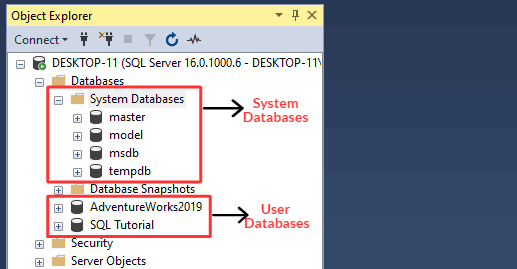Text copied!
SQL Database
Database is a collection of data that is organized and stored in a way that makes it easy to manage and manipulate. A database consists of one or more tables, which contain rows and columns.
SQL Server supports several types of databases, including :

1. User Databases :
User databases are created by the users to store data and database object. These databases can be used for various purposes, such as development, testing, data warehousing and reporting.
2. System databases :
System databases are used to store "system-level information" to support the operation of the database engine. As in, it manages server instance, track settings, configurations, databases and user accounts. Here're the main system databases in SQL Server :
[a] Master :
Master database stores system-level information such as login credentials and configuration settings for the entire SQL Server instance.
[b] Model :
Model databases acts as a template for creating the new database and any new database is based on its contents.
[c] MSDB :
MSDB database stores information about the backups, SQL Agent jobs and other maintenance tasks.
[d] TempDB :
TempDB database is used to store temporary data such as temporary tables.